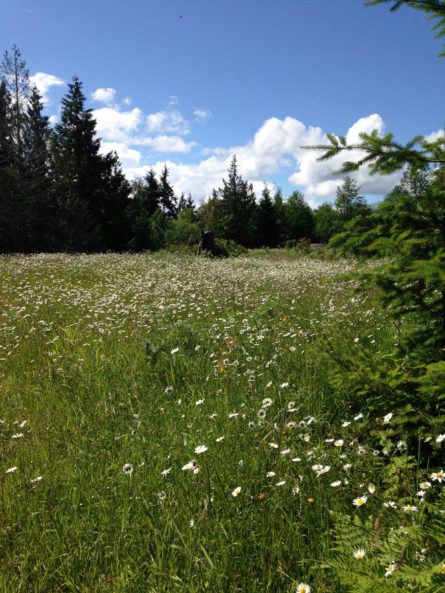Whole Body Remains or Cremated Remains
As the licensed operator of the Denman Island Natural Burial Ground, the Denman Island Memorial Society (DIMS) is responsible for ensuring that the required documentation is in place at the time of a burial and that activities at the gravesite are carried out in a proper manner. These responsibilities are described in the DIMS Cemetery Bylaws.
When someone dies in B.C., a doctor, nurse practitioner or coroner completes and signs a Medical Certificate of Death within 48 hours of the death. In the usual process, the medical certificate is forwarded to a funeral home. The funeral director then speaks with family or friends to gather the particulars of the death on a form called the Registration of Death, and forwards this document and the Medical Certificate of Death to B.C’s Vital Statistics Agency to register the death. Vital Statistics then issues a Disposition Permit (formerly called a Burial Permit) to the funeral director. The Cemetery Manager (or a DIMS board member) must receive the Disposition Permit before the burial can take place.
When a funeral home is not being used, the doctor, nurse practitioner or coroner confirming the death usually gives the Medical Certificate of Death to the family of the deceased. In this instance, the family must obtain the Registration of Death form from Vital Statistics. This form is completed by the ‘informant’ of the deceased (the personal representative of the deceased as named in the will or, without such naming, the spouse or a family member of the deceased). The informant then faxes both of these documents to Vital Statistics, which issues the Disposition Permit to the informant.
As outlined in the section entitled Burial Rights, for remains to be buried in the Denman Island Natural Burial Cemetery, a Right of Interment must either have been purchased earlier on a ‘pre-need’ basis or be purchased at the time of the death on an ‘at-need’ basis. This step must be completed before the informant can proceed with arrangements for an interment.
Next, the informant must complete the Authorization to Allow Interment form, a form that is provided by DIMS. Upon receipt of this document, the Manager (or Board member) will provide the informant with a Permission to Inter. This document is necessary for every burial, whether for whole body remains or cremated remains.
For whole body burial, the deceased’s family is responsible for ensuring that no toxic chemicals are used in preparing the body for burial and that the container and any clothing are biodegradable. Containers constructed in whole or part from chipboard, metal, bleached cardboard or any such artificial material are not permitted. Similarly, for the burial of cremated remains, the family must ensure that the container is biodegradable.

The family is also responsible for arranging for the safe and dignified transport of the remains to the cemetery. Provincial legislation sets out requirements regarding the transport of a body, including the need for a citizen to obtain a Private Transfer Permit from Consumer Protection BC to operate a vehicle containing a body. Transfer from the cemetery gate to the gravesite is also the responsibility of the family. Contact us for advice when making these arrangements.
Only personnel authorized by the DIMS Board may excavate a burial plot for an interment. Each interment is made in a grave dug to the depth appropriate for natural burial, which is shallower than the standard 1.8 m (6 feet) used in conventional burial. For whole body remains, the depth is 1.2 m (4 feet), measured from the bottom of the container to the surface of the surrounding ground; for cremated remains, the depth is 0.4 m (1.5 feet), measured in the same way. Family and friends may assist in the closing of the grave.
Floral tributes may be laid on the closed grave at the time of the interment, as long as they are flowers or foliage from local residential properties. Such floral tributes are removed after a period of seven days, and no further flowers or foliage are allowed.
Apart from the removal of undesirable non-indigenous plants, the grave is now left undisturbed so that the native vegetation can return.
At the request of the family, a small unengraved stone marker may be placed at the edge of an individual burial plot. Families interested in this option should discuss this matter with the Cemetery Manager (or Board member) beforehand. No steps are taken over time to remove or otherwise interfere with regenerating vegetation that may cover the marker.
